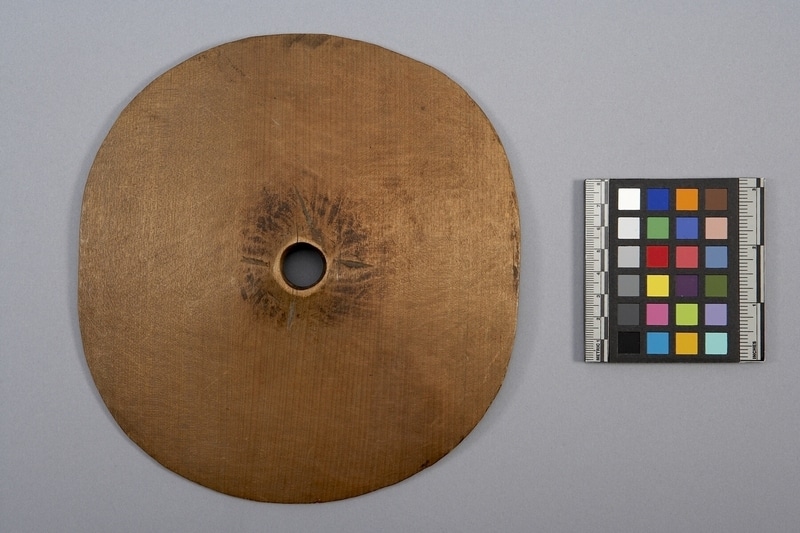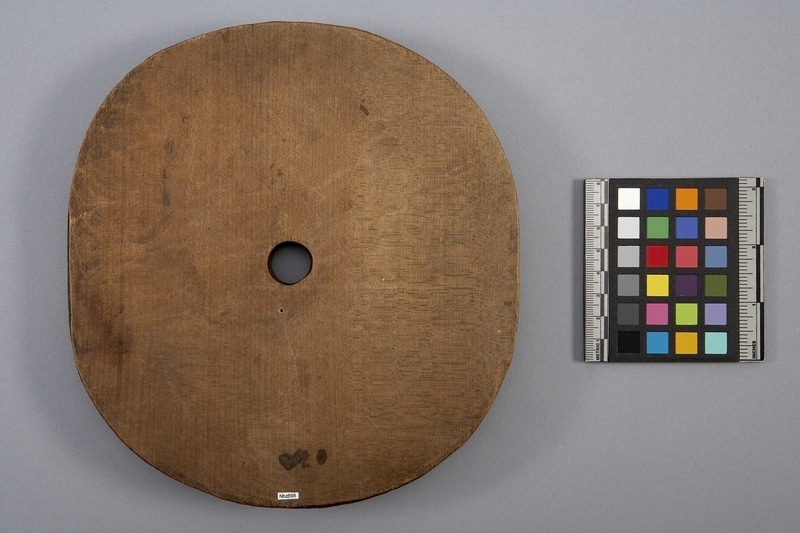Spindle Whorl Item Number: Nbz898 from the MOA: University of British Columbia


Description
Rounded wooden disc with hole in centre. The dorsal surface is slightly concave, while the ventral surface is convex with the central hole being the highest point. There are four lines incised into the convex side, directly around the central hole, which radiate out in four different directions. The wood is a reddish brown colour, and is darker in the area surrounding the opening for the spindle.
History Of Use
Homer Barnett (1955) notes that spindle whorls used by the southern Coast Salish of British Columbia are larger than those used in the north, with a shaft that is twice as long as the whorl. In the north, fibres were spun on smaller whorls that were "twirled between the leg and palm (1955:118)." By contrast, whorls such as this one were used to spin fibres that were suspended from overhead. This arrangement created a tension in the roving. Johnson and Bernick (1986) report that traditionally several different techniques were used for turning the spindle, however, contemporary weavers now make use of a spinning machine that is similar in appearance to a treadle sewing machine.
Specific Techniques
Made from a square piece of wood which had its corners rounded to create this circular object.
Cultural Context
weaving; spinning
Item History
- Made in Koksilah, British Columbia, Canada ?
- Owned by Thomas R. Richardson before 1998
- Owned by Frances M. Richardson before November 18, 1998
- Received from Frances M. Richardson (Donor) on November 18, 1998
What
- Name
- Spindle Whorl
- Identification Number
- Nbz898
- Type of Item
- spindle whorl
- Material
- maple wood
- Manufacturing Technique
- carved and incised
- Overall
- height 21.6 cm, width 19.2 cm, depth 3.1 cm
Who
- Culture
- Coast Salish: Quwutsun' ?
- Previous Owner
- Thomas R. Richardson and Frances M. Richardson
- Received from
- Frances M. Richardson (Donor)
Where
- Holding Institution
- MOA: University of British Columbia
- Made in
- Koksilah, British Columbia, Canada ?
When
- Ownership Date
- before 1998 and before November 18, 1998
- Acquisition Date
- on November 18, 1998
Other
- Condition
- good
- Current Location
- Case 2
- Accession Number
- 1768/0043